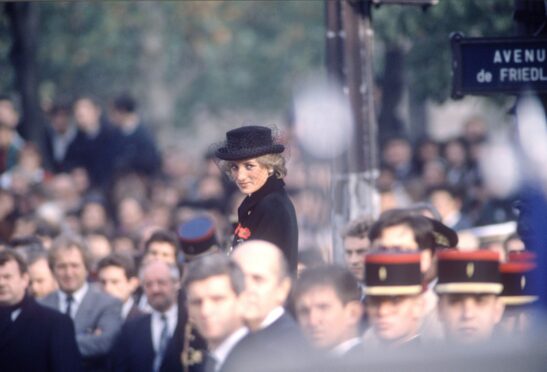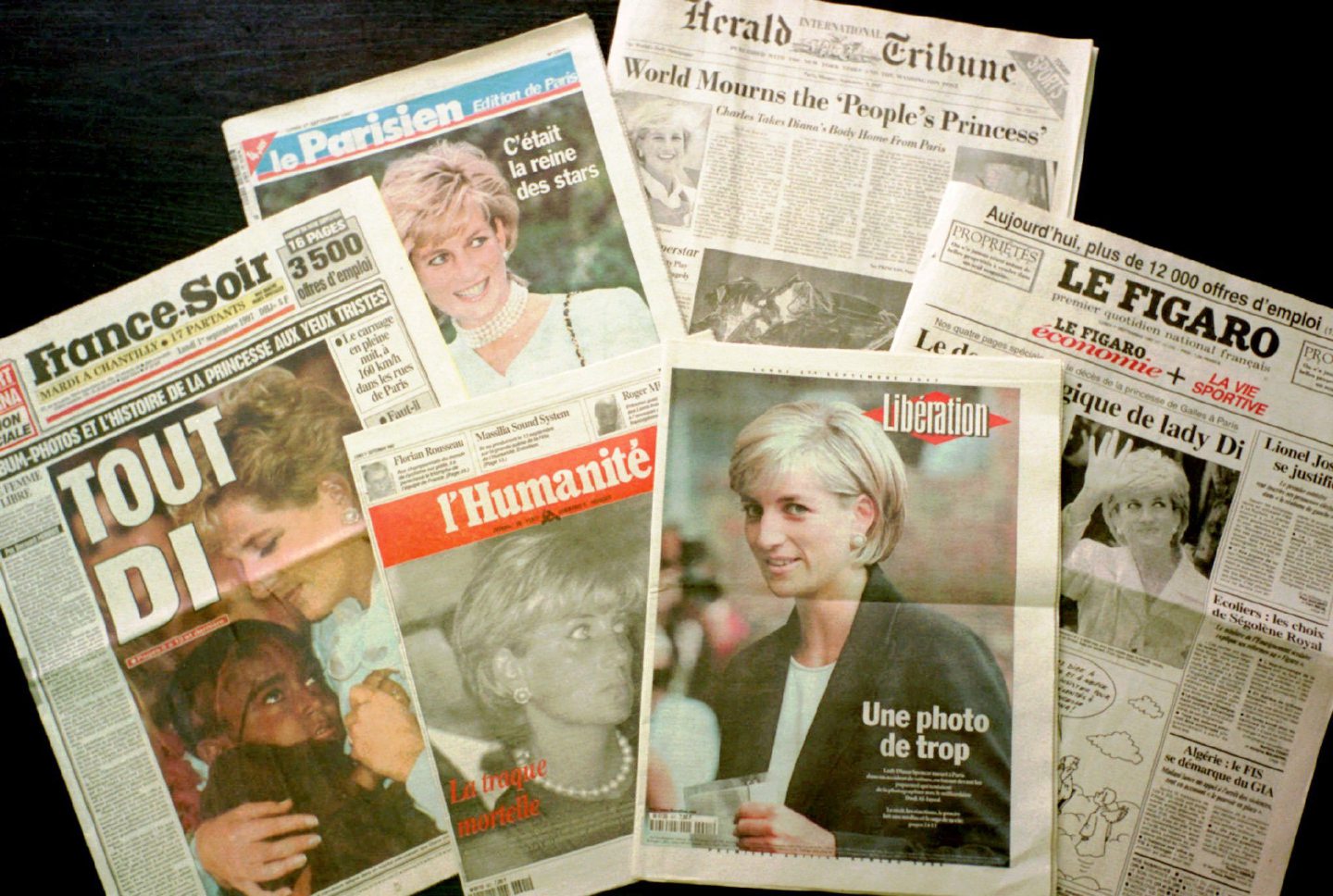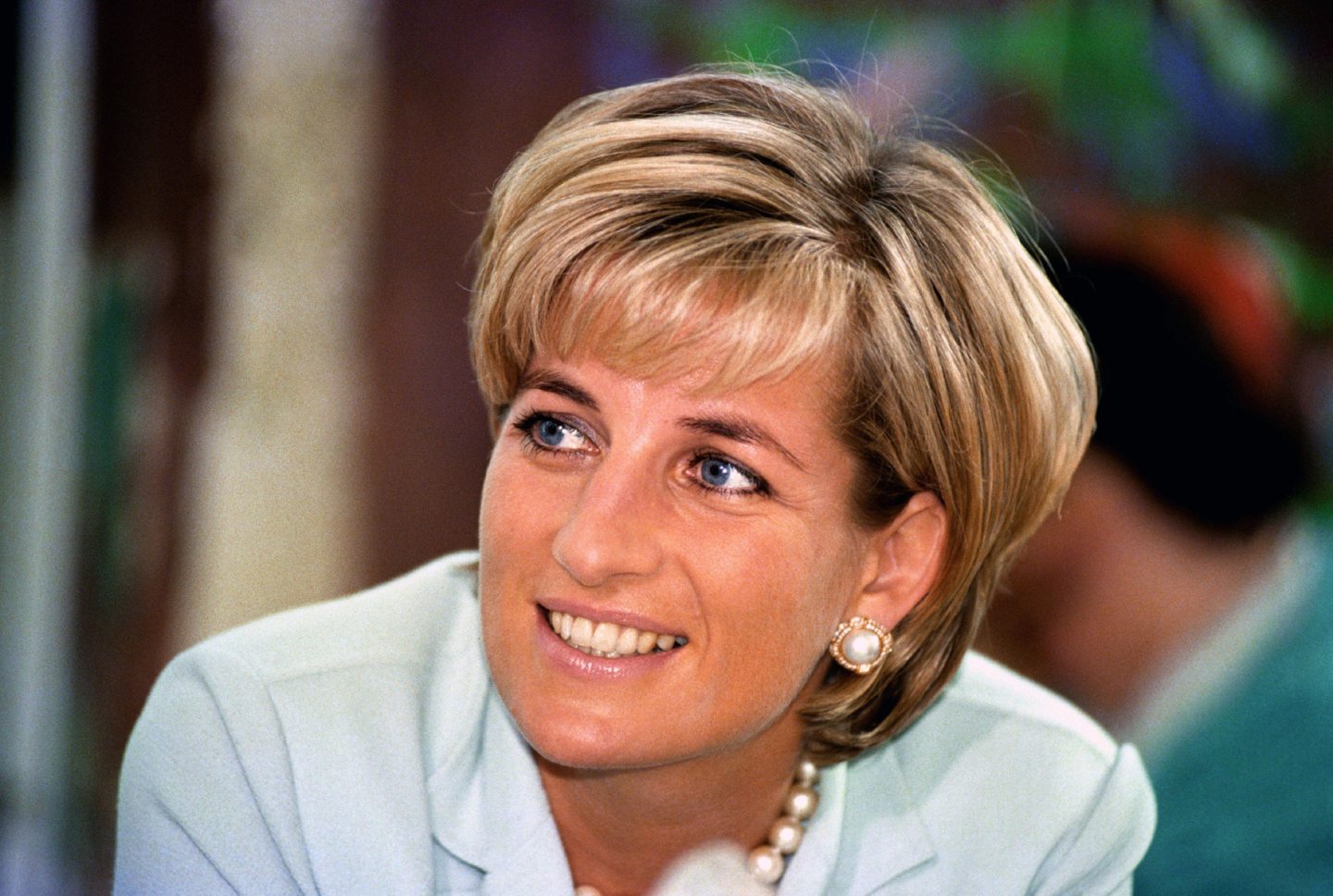
It’s a quarter of a century since Diana, Princess of Wales, died in Paris but French interest in the tragedy has by no means faded.
Gallic media remains obsessed by the events of August 31, 1997, and the life of an aristocrat who turned into a global superstar.
“The Eternal Icon” reads a headline in Elle magazine, while one of numerous Diana articles in Le Figaro newspaper recalls “The Last Summer of Princess Diana”.
Even the Left-Wing Libération joins in, writing: “If the Princess of Wales had not died under the Alma Tunnel in 1997, she would still be so slender and sentimental, popular and single.”
Le Parisien, the French capital’s main daily newspaper, has run a series on the saga, including one instalment referring to Diana’s two sons.
It reads: “Harry and William – two brothers devastated by the death of Princess Diana”.
Anniversary specials are also being aired by national broadcasters, while a new HBO documentary based on archival footage is promoted everywhere.
It aims “to explore our complicity in Diana’s tragic death”, say the producers, suggesting celebrity culture ultimately cost the princess her life.
Every detail of the morning when Diana ended up in the crumpled wreckage in the Alma Underpass, next to the River Seine, is picked over.
Images of Diana, who was only 36 and recently divorced from Prince Charles, are everywhere, just as they were when she was still alive.
The French still call her “Lady D” after her maiden name of Lady Diana Spencer, which she used when she was a demure English aristocrat.
By 1997, Diana was a very different person – her lawyers had just negotiated a multimillion-pound divorce settlement, and she was determined to establish herself as a bold, assertive woman on the world stage.
Nobody could believe that she would end her days in such appalling circumstances.
In this sense she was likened to other iconic figures from history who died much too young, from President John F Kennedy to James Dean and Janis Joplin.
Pictures of the wreckage of the black Mercedes W140 S-Class in which Diana was travelling are now juxtaposed with those of a smiling Diana.
Her car had been travelling at 65mph – more than twice the speed limit in the 660ft tunnel – before clipping a Fiat Uno, hitting a concrete divider wall, rolling over, and then coming to a standstill.
Those who died alongside Diana were her boyfriend Dodi Al-Fayed, the 42-year-old son of billionaire Mohamed Al-Fayed, and their driver, Henri Paul, 41.
A French investigation first concluded Paul was solely responsible for what amounted to a road traffic accident on a Saturday night.
Paul had been drinking and was under the effects of prescription drugs while speeding away from paparazzi on motorbikes.
The only survivor was the 29-year-old British bodyguard Trevor Rees-Jones, who was severely injured. Contrary to some claims, Rees-Jones had not been wearing a seat-belt – nobody had been.
Subsequent inquiries all concluded that the use of such belts would probably have saved everybody.
David Douglas, a former Metropolitan Police officer who worked on the UK inquiry, said: “If they had been wearing seat belts, our experts tell us there was probably an 80% chance that they would have survived the accident.
“They would have been badly injured, but it probably would not have been fatal.”
There has the usual torrent of conspiracy claims on both sides of the English Channel, and in the US. Dark forces linked to the Crown are the main suspects behind an alleged murder plot.
Those who have backed such theories include Mohamed Al-Fayed, who is now 93 and convinced senior royals objected to Diana contemplating marriage to his son, as he was an Arab Muslim.
Al-Fayed pointed to a note, written two years before her death, in which Diana predicted that Charles was “planning an accident” for her. “Did Princess Diana predict her own death in a car,” was a typical headline in Le Parisien last week.
In turn, close confidantes including former staff said this was typical of the jokey way Diana spoke about her life, especially after receiving advice from tarot card readers and crystal ball glazers.
As Ken Wharfe, her one-time police bodyguard, put it: “Diana would begin the conversation by saying something like, ‘Here we go again, I suppose we could be killed in a car accident.’”
Wharfe continued: “The princess never seemed serious when she spoke of possibly being in a car crash but joked about it.
“In all my years of working with Diana she never, even once, said to me that she thought that someone was out to harm her.”
The underpass was cordoned off with red-and-white crime-scene tape after the accident, and forensic work went on for days. Soon, the focus of the drama switched to the Pitié Salpêtrière Hospital, three miles east, where Diana breathed her last.
Diana had been highlighting the dangers of land mines in Bosnia earlier in the month, and had flown out from war-torn Sarajevo.
It was pointed out that anybody who really was planning her assassination could have carried it out far more easily in a city where security was extremely lax.
Instead, it was in Paris – the city of love and light, and one of the most sophisticated in the world – where disaster struck.
Massive interest in the British Crown is another reason for the exceptional amount of reminiscing over Diana in France.
The Republic may have guillotined its own monarchy in 1789, but there is a reason why Versailles – the former home of its kings and queens – is still the No 1 visitor site in France, the most popular holiday destination in the world.
Back in Paris, the Alma junction has hardly changed at all today – it remains hugely busy, with top marque limousines and sports cars still speeding along the four-lane stretch of road where the crash happened.
Many are driven by the members of the super-rich jet-set – just the kind of people Diana was spending so much time with after breaking away from royalty.
The only very noticeable addition to the scene is a classic blue-and-white French nameplate which reads “Place Diana (Diana Square) and also bears the legend 1961-1997 Princess de Galles” (Princess of Wales).
It is a highly dignified tribute compared to the tacky graffiti, posters and moulding bunches of flowers surrounding it.
The Ville de Paris – Paris city council – has always looked after British royals, including breakaway ones.
They famously provided a palatial home at a peppercorn rent for the abdicated King Edward VIII, who became the Duke of Windsor after marriage to the American divorcee, Wallis Simpson.
Paris is now run by Socialists and Greens, but they voted in favour of naming Place Diana, just as they named a flower market opposite the city law courts after the Queen during her last state visit to Paris, in 2014.
This is yet another example of how the French retain enormous respect and affection for the royals, including those whose legacies are far from resolved.

Enjoy the convenience of having The Sunday Post delivered as a digital ePaper straight to your smartphone, tablet or computer.
Subscribe for only £5.49 a month and enjoy all the benefits of the printed paper as a digital replica.
Subscribe © Michel Spingler/AP/Shutterstock
© Michel Spingler/AP/Shutterstock © PA
© PA